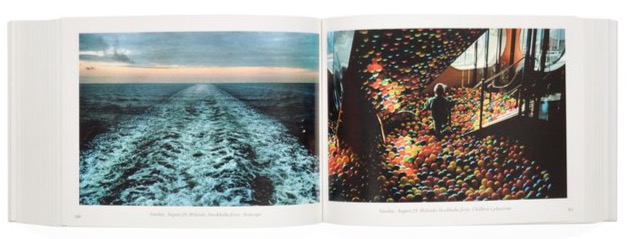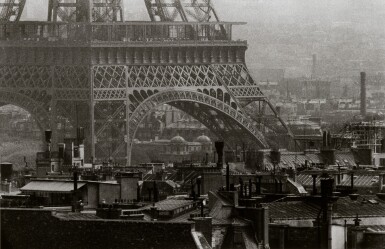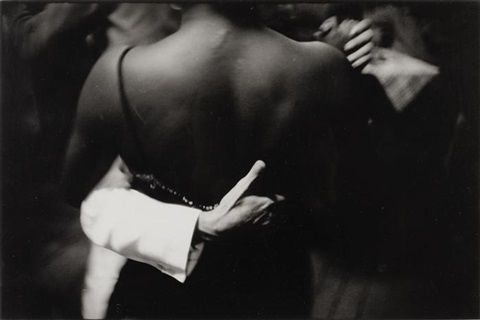Frank Horvat - Gifted Gallery
- Lilium

- Jun 7, 2023
- 4 min read

Frank Horvat, born 28 April 1928, was an Italian photographer who lived and worked in France. He is best known for his fashion photography, published between the mid 1950s and the late 1980s. Horvat's photographic opus includes photojournalism, portraiture, landscape, nature, and sculpture.
Horvat was born in Abbazia, Italy (now Opatija, Croatia), on 28 April 1928, into a Jewish family from Central Europe. His father, Karl, was a Hungarian general physician, and his mother, Adele, was a psychiatrist from Vienna. At the age of 11, in 1939, his family moved to Lugano in Switzerland, fleeing fascism in Italy. He went on to study fine art at Brera Academy in Milan.

Horvat started his career in the mid 1950s as a photojournalist in Paris, working to capture the 'sleaze and squalor' of the city, before going on to fashion photography. He acknowledged having been strongly influenced by French humanist photographer Henri Cartier-Bresson. After meeting Cartier-Bresson in 1950, he followed his advice and replaced his Rollei with a Leica camera and embarked on a two-year journey through Asia as a free-lance photojournalist. His photographs from this trip were published by Life, Réalités, Match, Picture Post, Die Woche, and Revue.

His photograph of an Indian bride under a veil, her face reflected in a mirror on her lap, was selected by Edward Steichen for The Family of Man exhibit at the Museum of Modern Art which toured the world to be seen by 9 million visitors.
Horvat lived in several countries throughout his early life, including Switzerland, Italy, Pakistan, India, the United States and England before settling in France in 1955, having moved from London to Paris. He found that the mood of its streets and its inhabitants had little in common with the somewhat romantic vision of the so-called humanist photographers.
In 1957, Horvat shot fashion photographs for Jardin des Modes using a 35-mm camera and available light, which formerly had rarely been used for fashion. This innovation was welcomed by ready-to-wear designers, because it presented their creations in the context of everyday life.
In the following years, Horvat was commissioned to do similar work for Elle in Paris, Vogue in London, and Harper’s Bazaar in New York.
Women played a central thematic role in his fashion journalistic works, with a focus on realism. Speaking about women in his photography and his emphasis on natural looks, he said, “I was interested in women. I wanted to show what I liked about them. They would spend two hours in the makeup chair, and I’d try to get them to remove it so they’d look more natural.” In his own words, he kept away from pictures of war, disease, and suffering, "not out of indifference to these misfortunes, but because I feel neither the moral justification nor the physical courage to face such situations as a photographer.”
Between 1962 and 1963, Horvat returned to photojournalism and took a trip around the world for the German magazine Revue. Then he experimented with cinema and video. In 1976, he decided to "become his own client" by producing three personal projects: Portraits of Trees (1976–82), Very Similar (1982-86) and New York Up and Down (1982–87), which he called his "triptych".

In this period, Horvat went on towards colour photography including his series New York Up and Down, where he extensively shot portraits of passengers on New York's subway systems and coffee shops. This was also period when his eyesight started to fail from an eye disease.
It was then that he began a new project, a series of interviews with fellow photographers, such as Edouard Boubat, Robert Doisneau, Mario Giacomelli, Josef Koudelka, Don McCullin, Sarah Moon, Helmut Newton, Marc Riboud, Jeanloup Sieff and Joel-Peter Witkin. They were published in France under the title Entre Vues.
In the 1990s, Horvat became interested in computer technology and produced Yao the Cat (1993), Bestiary (1994), and Ovid’s Metamorphoses (1995). He transgressed the Cartier-Bressonian rule of the "decisive moment" by combining parts of images shot at different times and in different places. Several years later, he produced A Trip to Carrara. This was also the period that he was one of the first photographers to experiment with Photoshop.
Horvat's later projects were perhaps his most personal. 1999 is a photo-diary of the last year of the millennium, shot with a tiny analog camera designed for amateurs. Entre Vues and La Véronique were taken with the first digital Nikon within a 30-meter range, either inside his home in Provence or in its immediate surroundings.
Eye at the Fingertips, which was started in 2006, was photographed with a digital compact camera. His next enterprise was an iPad application called Horvatland, which contains more than 2,000 photos produced over the course of 65 years with ten hours of commentary. He received the Fondazione del Centenario Award (based in Lugano, Switzerland) in 2010, for his contribution to European culture.
Horvat's final book was Side Walk, showcasing life in New York city in the 1980s. He died on 21 October 2020 at the age of 92.
Reading Recommendations & Content Considerations
Frank Hovart Frank Hovart













































































































































































































Comments